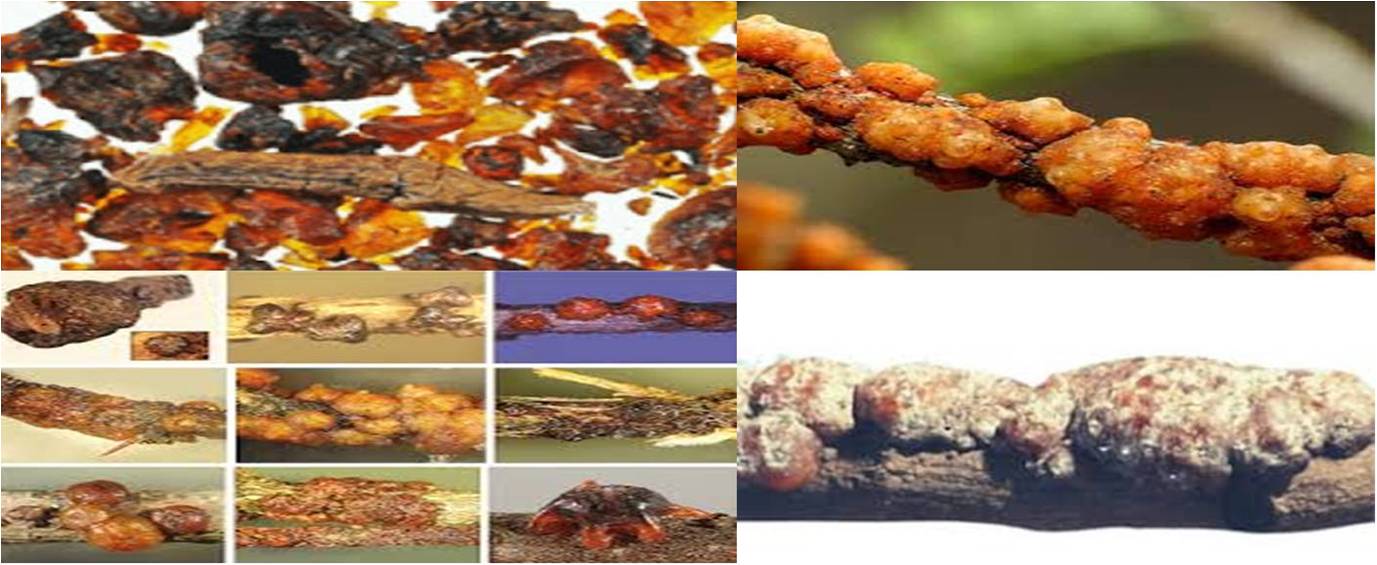Lac Culture Importance: Lac culture holds significant importance in various industries and has a rich history worth exploring. In this blog post, we will delve into the significance of lac culture, its introduction, and delve into its intriguing history. Join us as we unravel the world of lac culture and discover the profound impact it has had on numerous aspects of society.
Lac is a resinous secreted substance by the lac insect called as Laccifer lacca (popular name “lac insect”). Lac culture is a process which are using scientific management and rearing of lac insects for high-quality lac to be used for commercial purposes are called lac culture. Management consisting the host plants selection, inoculation of plants with lac insects, rearing of lac insects, pest management, harvesting and processing of lac. Lac, a resinous secreted substance produced by the lac insect known as Laccifer lacca or “lac insect,” plays a crucial role in various industries. Lac culture involves the scientific management and rearing of lac insects to obtain high-quality lac for commercial purposes. In this article, we will explore the history, distribution, and importance of lac culture. ‘Lac Culture Importance’
Lac Culture Importance
Lac culture holds immense importance due to its versatile applications throughout history. Its utilization for various purposes dates back to ancient times in India. For example, the Mahabharata mentions the use of a “lac palace” to carry out a malicious plan. The term “Lakh” or “Laksha” in Hindi and Sanskrit refers to a large number (approximately 4,00,000 insects) required to produce one kilogram of lac, highlighting the significance of lac production. Three primary products derived from lac insects include lac-dye, lac-wax, and lac resin, all of which have been valuable items of trade and commerce. Lac resin finds application in the food processing, cosmetics, varnish and printing, electrical, leather, adhesive, pharmaceutical, perfumery, and various other industries. While lac dye (erythrolaccin) was traditionally used in India as a cosmetic and dye for wool and silk, its use has been replaced by synthetic dyes. Lac also offers medicinal benefits, including liver protection and its potential to aid in combating obesity. Moreover, lac finds its place in the food, confectionery, beverage, and textile industries. Its diverse applications range from the manufacturing of toys, ornaments, electrical insulating materials, varnishes, polishes, lithographic inks, shoe polishes, sealing wax, and more. Additionally, lac serves purposes such as electric insulation, lamination of papers, hat proofing, coating of pictures and fossils, tailors’ chalks, crayons, bottle sealers, lipsticks, enamels, printing inks, gramophone records, fireworks, and as a protective coating for wood. The versatility of lac demonstrates its indispensability in various sectors. ‘Lac Culture Importance’
Systematic Position of Lac Insect
Phylum – Arthropoda
Class – Insecta
Order – Hemiptera
Super family – Coccidae
Family – Lacciferidae
Genus – Laccifer
Species – Lacca
Lac Insect and Lac Production
The lac insect is responsible for producing lac, which is extensively used by humans for its various applications. Lac culture involves several management practices, including selecting suitable host plants, inoculating the plants with lac insects, rearing the insects, managing pests, and ultimately harvesting and processing the lac. ‘Lac Culture Importance’
Historical Significance of Lac
Lac insects and their products have been known to naturalists since ancient times. References to lac can be found in ancient Sanskrit works like Atharva-Vela and the Mahabharata. In the Mahabharata, there is mention of a “lac palace” built by the Kauravas to burn the Pandavas alive. The significance of lac in India’s history is evident in the detailed accounts of the lac industry by scholars like Abul Fazal in his book “Ain-i-Akbari.” Lac and lac insect studies have also been documented in China, with references made by Mahdihassan. The first scientific report on lac and lac insects was published by Kerr and Glover in 1782, initiating extensive research on various aspects of lac, including its organization, distribution, taxonomy, host plants, culture, production, enemies, chemistry, and technology. ‘Lac Culture Importance’
Distribution of Lac Production
India has long been the dominant country in lac production and lac Culture Importance. However, other countries like Africa, Australia, Brazil, Burma, Sri Lanka, China, Formosa, France, Germany, Japan, Malaya, Nepal, Spain, Thailand, Turkey, the United States, and others also contribute to lac production. In recent years, lac production industries in Thailand, Malaya, Burma, and Nepal have witnessed significant growth, making Thailand a major competitor to India in lac exports. In India, lac is produced in various regions, including Assam (Kashi Hills), Bengal (Calcutta, Jangipur, Murshidabad, Mathrapur, Malda), Bihar (Manbhum, Palamau, Ranchi, Santhal Pragana), Delhi, Gujarat, Hyderabad, Kashmir, Madhya Pradesh (Damoh, Champa, Bilaspur, Rewa, Umaria), Chennai, Coimbatore, Mysore, Orissa (Cuttack, Mayurbhanj), Punjab (Hoshiarpur, Shahpur), Rajasthan (Indergarh, Kota, Jaipur, Jhalawar, Karauli), and Uttar Pradesh (Ghazipur, Mirzapur, Agra), among others. ‘Lac Culture Importance’
Conclusion
In conclusion, lac culture plays a significant role in providing high-quality lac for commercial purposes. The history of lac insects and their products can be traced back to ancient times, and India has been a major producer of lac. The importance of lac culture is evident through its diverse applications in industries such as food processing, cosmetics, varnish and printing, electrical, leather, adhesive, pharmaceutical, perfumery, and many more. The extensive utilization of lac in various sectors showcases its immense value and significance.
FAQs (Frequently Asked Questions)
What is lac culture? Lac culture refers to the scientific management and rearing of lac insects for the production of high-quality lac, which has numerous commercial applications.
Where is lac primarily produced? India is the leading country in lac production, with other countries like Thailand, Malaya, Burma, and Nepal also increasing their lac production.
What are the primary products derived from lac insects?
The primary products derived from lac insects are lac-dye, lac-wax, and lac resin, which have been valuable items of trade and commerce. ‘Lac Culture Importance’
In which industries is lac commonly used? Lac finds application in industries such as food processing, cosmetics, varnish and printing, electrical, leather, adhesive, pharmaceutical, perfumery, and many others. ‘Lac Culture Importance’
What are some historical references to lac? Lac has been mentioned in ancient Sanskrit works and historical accounts, including the Mahabharata, Ain-i-Akbari, and various other sources. ‘Lac Culture Importance’
Read more: https://www.britannica.com/topic/lac-resinous-secretion
LAC CULTURE : Life Cycle of Laccifer lacca
Morphology of Laccifer lacca




